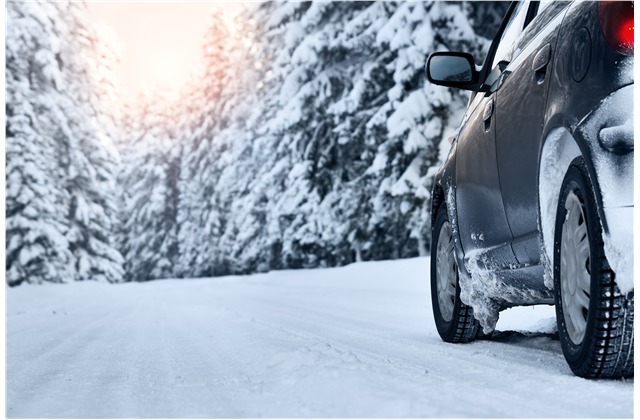Winter weather can turn driving into a dangerous task, with icy roads, reduced visibility, and unpredictable conditions. Whether you’re a seasoned driver or a new road user, it’s important to be prepared for the challenges that winter driving brings. In this guide, we’ll provide essential winter driving tips, from vehicle preparation to handling snowy roads safely, so you can stay safe on your next journey.
Preparing Your Vehicle for Winter
Before hitting the road, it’s crucial to ensure your vehicle is ready for winter conditions. Follow these steps to prepare:
- Check Your Tires: Winter tires provide better traction on icy roads. Make sure your tires are in good condition and have enough tread depth for maximum grip.
- Test Your Battery: Cold temperatures can drain a battery quickly. Have it tested to ensure it has a full charge for reliable performance.
- Top-Up Antifreeze and Oil: Check your antifreeze levels and use the right type of oil for cold temperatures to prevent engine problems.
- Inspect Your Wiper Blades and Fluid: Replace worn wiper blades and use winter-grade windshield washer fluid to maintain visibility.
- Replace the Air Filter: A clean air filter is essential for optimal engine performance, especially in harsh winter weather.
Safe Driving Techniques on Icy Roads
Driving on icy or snowy roads requires special attention and precaution. Here are key techniques to improve your safety:
- Increase Following Distance: On icy roads, stopping distances are longer. Keep a greater distance between your vehicle and the car ahead to allow for safe braking.
- Slow Down: Even if the road looks clear, snow or ice can be hidden. Reduce your speed and drive cautiously.
- Use Low Beams in Snowstorms: High beams can reflect off the snow, reducing visibility. Use low beams when driving through snow or fog.
- Don’t Use Cruise Control: On slippery roads, you need to have full control of the accelerator and braking. Avoid using cruise control in winter conditions.
- Avoid sudden movements: Abrupt steering or braking can cause your tires to lose traction. Make smooth, gradual movements to maintain control.
Building an Emergency Kit
An emergency kit is an essential part of winter driving preparedness. Here’s a list of items you should have in your vehicle:
Jumper Cables
Flashlight with Extra Batteries
First-Aid Kit
Blankets or Warm Clothes
Non-perishable Snacks and Water
Ice Scraper and Snow Brush
Shovel and Sand or Kitty Litter (for traction)
Portable Phone Charger
Road Flares or Reflective Triangles
Understanding Winter Road Hazards
In winter, there are specific road hazards that you should be aware of:
Black Ice: This thin, invisible layer of ice forms on roads when the temperature drops below freezing. It can be especially dangerous because it’s hard to see.
Snowdrifts: Snow can accumulate in piles on the road, making it hard to see the path ahead. Always drive cautiously when crossing snowdrifts.
Bridges and Overpasses: These areas freeze faster than the rest of the road and can be slick. Slow down when approaching bridges and overpasses.
Fog and Snowstorms: Limited visibility during winter storms can increase the risk of accidents. Always drive with your headlights on and reduce your speed in poor visibility.
How to Stay Safe During a Winter Road Trip
If you’re planning a longer winter road trip, take the following precautions:
- Plan Your Route: Check weather conditions and road closures before you leave.
- Leave Early: Allow extra time for driving in adverse conditions.
- Keep Your Gas Tank Full: Avoid running low on gas during winter trips in case of delays or detours.
- Communicate Your Plans: Let someone know your route and estimated arrival time.
- Avoid traveling in severe weather: If possible, avoid traveling during snowstorms or extreme cold temperatures.
Frequently Asked Questions About Winter Driving
Q: What should I do if my car starts to skid on ice?
A: Don’t panic. Steer gently into the skid and avoid slamming on the brakes. Slowly release the brake and gently accelerate when you regain control.
Q: Can I drive with my headlights on during a snowstorm?
A: Yes, it’s essential to use your headlights during a snowstorm to improve visibility, but use low beams to prevent glare from reflecting off the snow.
Q: How do I prevent my car from getting stuck in snow?
A: Ensure your tires are winter-ready, and if your car gets stuck, try using sand or kitty litter for traction and clear away snow around the tires.
Stay Safe and Prepared with Our Expert Driving Tips
At 4PIN, we’re committed to helping you stay safe on the road, no matter the season. Winter driving requires preparation, knowledge, and the right mindset to stay in control. Follow these tips and make sure your vehicle is ready for the road conditions.
Safeguard yourself and your loved ones by implementing expert-approved strategies. Winter driving can be daunting, but with our tips, you’ll conquer icy roads and arrive at your destination safely. Prioritize road safety—explore our guide today!

